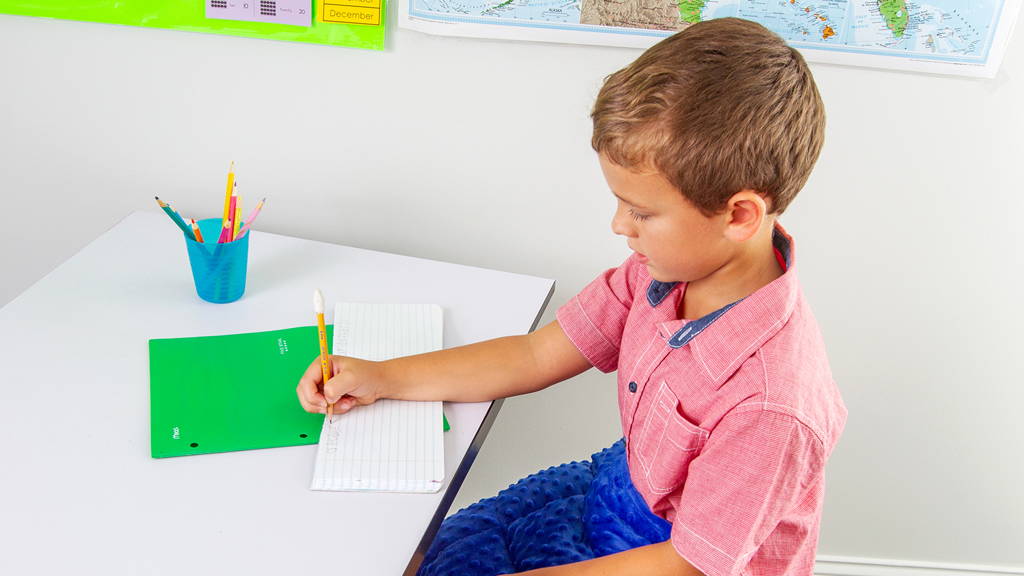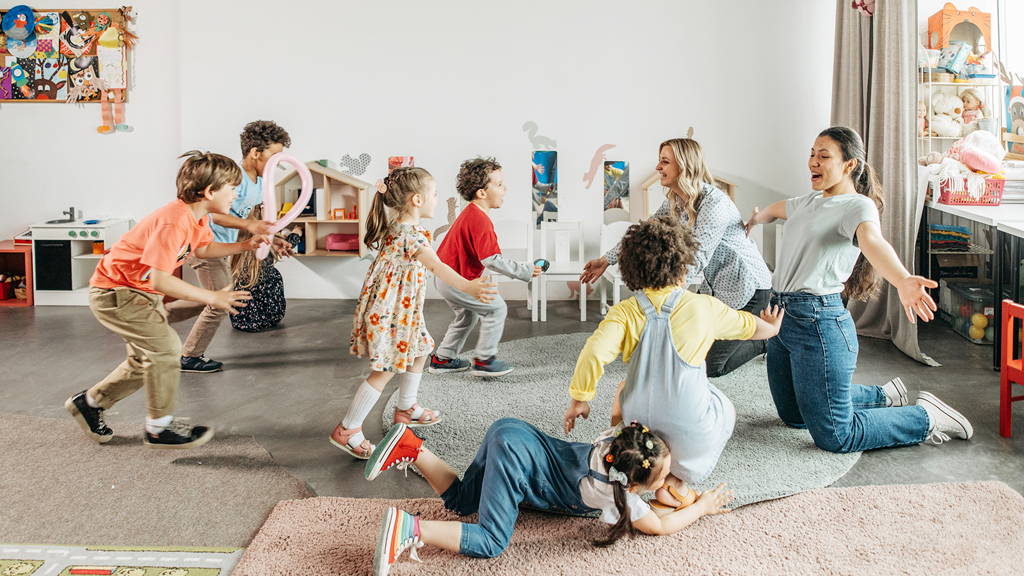What is a Sensory Informed Classroom?
But the great news is, having a sensory-informed classroom improves things for everyone! One reason is that sensory-informed spaces help prevent challenging or unexpected behaviors that could potentially disrupt the learning process. And because the sensory solutions are built-in, it saves sensory kids from having to request “something different,” risking alienation from their peers.
Flexible Seating Options
A sensory-informed classroom might include a variety of seating options like:
Traditional desks
- T-stools
- High tables for kids who want to stand
- Couches and chairs for reading and study time
- Wiggle cushions
- Exercise balls
- Lap desks (children can sit on the floor or against the wall)
- Beanbag chairs
- Lowered tables
- Egg-shaped chairs for deep pressure therapy
Offering various seating options in your class doesn’t have to break the bank. See what you have at home. Check if there are unused items around the school that might work. Yard sales and thrift stores are also excellent options for keeping the budget on track.
Flexible seating acknowledges that different kids have different learning styles and sensory needs. When each kid feels focused, safe, and alert, everyone benefits because the environment is ripe for learning and creativity.
Focus Tools
At the start of the school year, make everyone aware of the available focus tools and explain how they work. Let your kids know they are welcome to grab a focus tool any time they need one! When there’s no stigma around focus tools, all your students can feel comfortable using them.

Excellent focus tools include:
- Noise-canceling earphones (These don’t have to be used to play music. They can also mute external noises.)
- Fidget toys - the right fidget toys are silent and don’t distract other children
- Gravity Lap Pad - to help kids keep calm and study on!
- Sensory Swing - a “calm down” corner complete with a therapeutic sensory swing lets kids find relief if they get overwhelmed
Movement

This is another solution that’s essential for all kids: Make time for movement throughout the day! It’s the reason recess exists, but recess isn’t always enough. Stretch, shake out the stress, wiggle around on the floor, or enjoy other types of movement.
Presenting this strategy at the beginning of the year makes it a natural part of the learning process. Kids will pick up on it and use movement to their advantage. Just help your kiddos understand that getting up and moving around is a tool to help them do their school work, not a way of avoiding it.
Conclusion: Making a Sensory Informed Classroom
A sensory-informed classroom benefits everyone, even teachers! When every child is supported, every child has a better chance to learn, grow, and explore in a safe, friendly environment.
As a teacher, you can enjoy a more productive, well-behaved class by integrating sensory tools and solutions early on. And remember, Sensory Scout is here with useful blogs, sensory-friendly products, and an entire community of support and encouragement. You’ve got this!
 Skip to content
Skip to content

